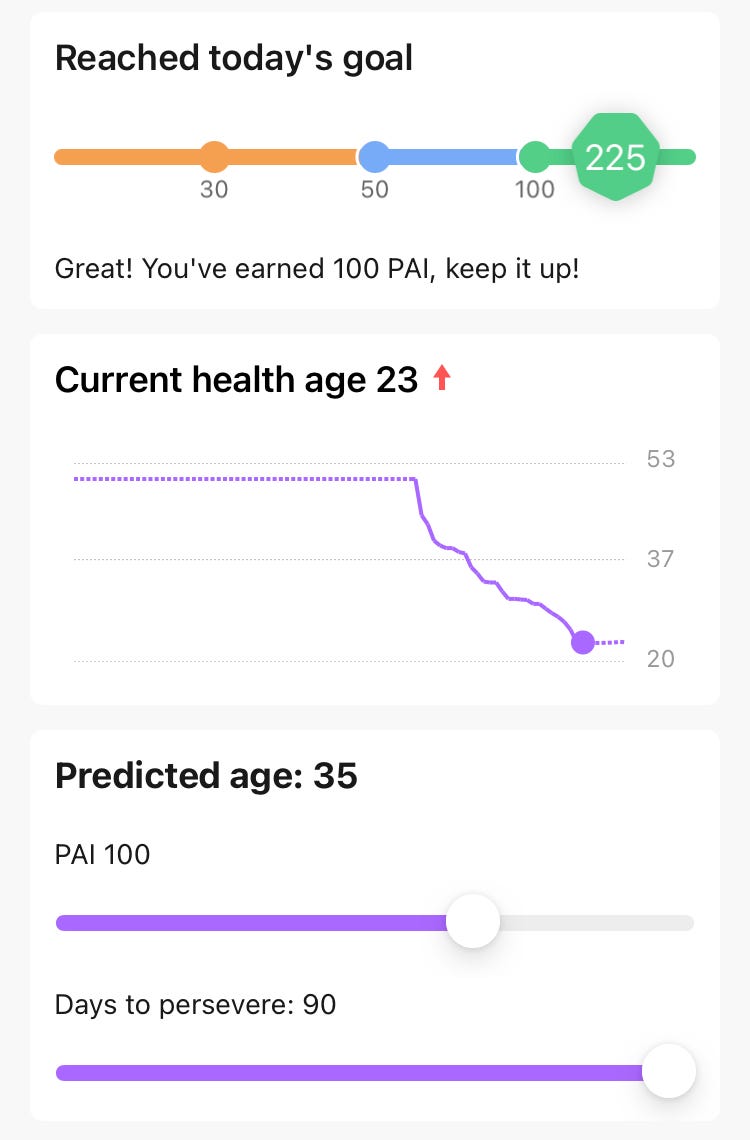Image by PictoBike - The Noun Project
PAI is a personal physiological activity indicator, based on heart rate data, combined with daily activity intensity and multi-dimensional dynamic comprehensive evaluation of personal physiological data, converted into an intuitive PAI value through an algorithm. It does not depend on a single item of data, while it allows you to have a comprehensive system to understand the physical condition.
Only a certain intensity of daily activities or workouts is required to acquire a PAI value. According to the research results of the HUNT Fitness Study *, keeping your PAI above 100 will help reduce the death risk of cardiovascular disease, and increase life expectancy.
Above is the official text from inside the Zepp app, which I got when I bought my Amazfit watch last year. I was curious to learn about this PAI measurement and after using the watch for my dog walking, cycling and other physical activities that are worthy of measuring, I started to notice something quite weird. The readings were hugely complimentary for me. It was making me feel quite good about myself, almost self-congratulatory towards my own organism and how it was performing. But the readings seem to be hap-hazard in nature, not very predictable, I thought, the graph seemed to be full of errors or so I thought. First time round in using it for at least 10 months, my current health age dropped to around 45.
Then I had problems with my watch syncing to the app, I think it happened after an update, so I reset everything back to factory and started again, this meant my PAI also went back to scratch. The goal is to reach 100 PAI as many times as you can during the week and stay at 100 as much as possible. Well my cycling causes the number to at least double and since using it again after having reset the watch, my current health age is halved further to 23! Quite incredible to think this could be right as I am actually 61. The predicted age is showing 35, but that is based on staying at a PAI of 100 for at least 90 days, which is definitely possible, when I move the slider to the far right, it suggests a PAI score of 150 for at least 90 days, with a new predicted age of 26.
Whether true or not, doing exercise daily even if it is just walking the dog for 3 times per day and in total for about 5km per day, it significantly improves your heart health and therefore it will reflect in your PAI score. See below for more details on the Hunt Study.

Real data from Michael’s Zapp app as at May 20, 2021
* HUNT Fitness Study: This study is a sub-project of the HUNT study and is led by Professor Ulrik Wisloff of the Norwegian University of Science and Technology. The HUNT study has lasted over 35 years and involved more than 230,000 participants.
Study Summary– The American Journal of Medicine
Personalized Activity Intelligence (PAI) for Prevention of Cardiovascular Disease and Promotion of Physical Activity.
The purpose of this study was to derive and validate the single metric of PAI to determine if this activity tracking metric is associated with a lower risk of cardiovascular disease mortality.
The PAI algorithm was derived from the HUNT Fitness Study (initially conducted from 2006–2008). Using data from approximately 4,631 individuals in the HUNT Fitness study, it was validated in the general HUNT population (39,298 individuals) aged 20–74 years. The PAI scores were separated into three sex-specific groups (≤50, 51–99, and ≥100), plus the inactive group with PAI scores of 0 as areferent. After more than 1 million person years of observations during a mean follow-up time of 26.2 years, there were 10,062 deaths, including 3,867 deaths (2,207 men and 1,660 women) from cardiovascular disease. Men and women with PAI scores greater than or equal to 100 had a 17% and 23% reduced risk of cardiovascular disease mortality, respectively, compared with the inactive groups. Participants who did not obtain a PAI score of 100 or more had increased risk of dying regardless of meeting the physical activity recommendations.
Published in 2016, this study concluded that PAI “may have a huge potential to motivate people to become and stay physically active, as it is an easily understandable and scientifically proven metric that could inform potential users of how much physical activity is needed to reduce the risk of premature cardiovascular disease death.”
The major strength of the PAI algorithm lies in its applicability when incorporated in self-monitoring devices that allow for continuous measurement of the heart rate. Future studies are warranted to validate the algorithm against continuous heart rate measurements and ultimately in long term randomized trials to evaluate the effect on cardiorespiratory fitness, cardiovascular risk and adherence to physical activity in diverse populations.
To read the full study, click here.
